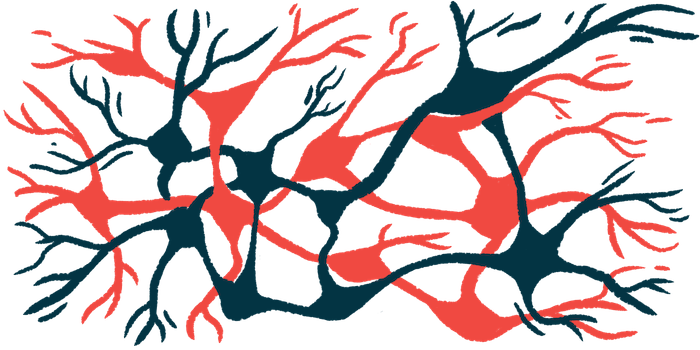ROCK inhibitor Bravyl may reduce spread of TDP-43 clumps in ALS
Therapy has shown promising neuroprotective, anti-inflammatory properties

Bravyl (oral fasudil), an experimental therapy Woolsey Pharmaceuticals is developing for amyotrophic lateral sclerosis (ALS), significantly reduced the spread of toxic TDP-43 protein clumps in a cell model of the disease.
New data was presented at the University of Denver during the International Symposium on ALS/MND, which took place in Montreal from Dec. 6-8. The poster was titled, “Fasudil diminishes the capacity of ALS patient-derived exosomes to induce TDP-43 neuropathology in vitro.”
ALS is caused by the progressive dysfunction and death of motor neurons, the nerve cells that control voluntary movements. Although the mechanisms leading to the loss of these neurons isn’t fully understood, the formation of TDP-43 clumps occurs in most cases of ALS.
TDP-43 is a protein that’s normally found in the cell’s nucleus where DNA is located and is needed there for processing certain RNA molecules. In ALS, however, TDP-43 is usually abnormal and is prone to clumping outside the nucleus, which interferes with many cellular functions and trigger neurodegeneration.
These misfolded TDP-43 proteins can act as seeds, recruiting normal TDP-43 molecules to adopt the same misfolded state. Thus, when nerve cells communicate with each other via small extracellular vesicles, the faulty TDP-43 can be transported from a diseased cell to healthy ones, spreading disease-related mechanisms across tissues and contributing to disease progression.
Bravyl, which is being tested in a Phase 2a trial (NCT05218668) in ALS patients, reduces inflammation and nerve cell death by blocking the ROCK enzyme, which is often elevated in the disease. The therapy has shown promising neuroprotective and anti-inflammatory properties in preclinical and clinical studies, but it wasn’t known if it could also reduce TDP-43-related mechanisms in people with ALS.
Treatment with Bravyl
Here, researchers at the University of Denver led by Daniel Linseman, PhD, isolated neuron-derived exosomes, or the small vesicles secreted by neurons where TDP-43 can be transported, from two healthy controls, along with six ALS patients who participated in the REAL trial. Exosomes from patients were collected before treatment and after six months of treatment with a daily 180 mg dose of Bravyl.
The obtained exosomes were then used to treat lab-grown mouse motor neurons that had been modified to produce the human TDP-43 protein with a fluorescent tag. First, the researchers found the exosomes obtained from patients before treatment caused TDP-43 to accumulate in the cytoplasm rather than the nucleus and form protein clumps, showing the model worked as intended.
However, when neurons were exposed to exosomes from the same patients after six months of treatment, TDP-43 aggregation decreased significantly, by 60.3%, while the protein redistribution to the cytoplasm decreased by 61.4%. The findings suggest Bravyl may prevent the exosome-mediated spread of TDP-43 into other cells, providing another mechanism by which it may slow disease progression.
The REAL clinical trial is ongoing. A first group of 31 participants received the 180 mg dose for six months and results showed the nerve cell damage biomarker neurofilament light chain was significantly reduced by 15%. A second group receiving 300 mg has also been enrolled and results are expected by mid-2025.
“We have previously shown that [six]-month treatment of ALS patients with Bravyl reduces neurofilament light chain (NfL),” Sven Jacobson, CEO of Woolsey, said in a company press release. “We have evidence that Bravyl can reduce the spread of toxic TDP-43, a truly novel discovery. These findings highlight Bravyl’s potential to transform ALS treatment.”






